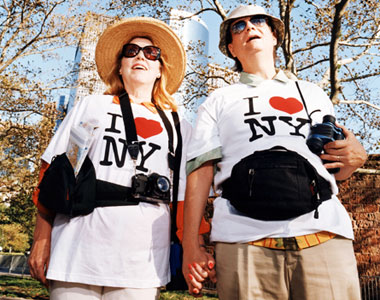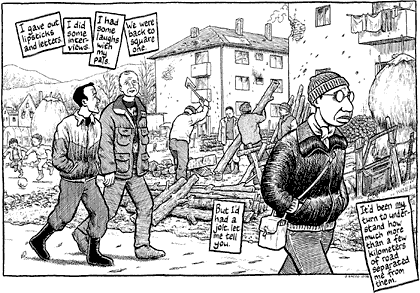
The Honeymoon Phase.
That wonderful period of time in which the entire world seems like it’s just the two of you and the only thing that you want to do is spend your time together. You feel like you belong. The two of you strive for perfection and as a result… anything that might normally drive you up the wall somehow seems so very insignificant when you are this drunk in love.
In the novel The Reluctant Fundamentalist by Mohsin Hamid, the narrator, Changez, experiences the honeymoon phase with his love interest: Erica, a wealthy, young and social Manhatten elite. When talking about Erica to the American, he describes her as being “strong, sleek, and invariably surrounded by her pride” (Hamid, 2007, p. 22). Changez also compares her to a lioness, one who has presence and “an uncommon magnetism” (Hamid, 2007, p.21), attracting dozens of people to her-just like America.

He adored her.
Changez also experiences the honeymoon phase with America during his years at Princeton and at Underwood Samson. In the corporate world, Changez experiences the stimulating modernization of America and begins to feel accepted by the nation. He assimilates into the culture of the country through his financial pursuits throughout his degree at Princeton and his career at Underwood Samson. He strives for perfection and feels like he belongs.

He was in awe of the western world.
But this feeling of admiration, this honeymoon phase quickly wore off.
With Erica… With America.
Changez began to see the flaws in both Erica and America as time went on…
In the beginning, he ignored these imperfections as he was blinded by his own ideals and admiration of Erica & America. When in Greece, Changez explains that there were “details which annoyed [him]” (Hamid, 2007, p. 21). The Americans with which he was travelling with (including Erica) had no problem with spending large sums of money; an average meal costing them $50+. He then goes on to talk about their “self-righteousness in dealing with those whom they had paid for a service” (Hamid, 2007, p. 21). These little annoyances went to the back of his mind as Erica shimmered in the foreground to which gave Changez “enormous satisfaction” (Hamid, 2007, p.21). The honeymoon phase.
As this wore off, Changez’s eyes opened to the faults around him. He noticed the condescending attitude of the social elites, including Erica’s father. He noticed Erica’s self-absorbency, her deep grief following Chris’ death and her eventual implosion. Simultaneously, he noticed America’s self-serving policies, its deep grief following the 9/11 attacks and its eventual explosion of Afghanistan.
This marked the end of the honeymoon phase for Changez.
“The hardest thing to explain is the glaringly evident which everybody had decided not to see.”
~Ayn Rand


 In order to immerse himself even more, Sacco attends many get-togethers, parties and even “The Piramida”-Gorazde’s own discotheque. At one of these parties, Sacco meets a man named Edin who turns out to be Sacco’s “main man, [his] main man” (Sacco, 2000, p. 8). Edin serves as Sacco’s personal tour guide and sense of insight into the harsh reality of the town of Gorazde. Sacco returns to Gorazde three different times and each time, he said, “[he] sought out Edin to help [him] put the pieces of the story together” (Sacco, 2000, p. 16).
In order to immerse himself even more, Sacco attends many get-togethers, parties and even “The Piramida”-Gorazde’s own discotheque. At one of these parties, Sacco meets a man named Edin who turns out to be Sacco’s “main man, [his] main man” (Sacco, 2000, p. 8). Edin serves as Sacco’s personal tour guide and sense of insight into the harsh reality of the town of Gorazde. Sacco returns to Gorazde three different times and each time, he said, “[he] sought out Edin to help [him] put the pieces of the story together” (Sacco, 2000, p. 16).
Recent Comments